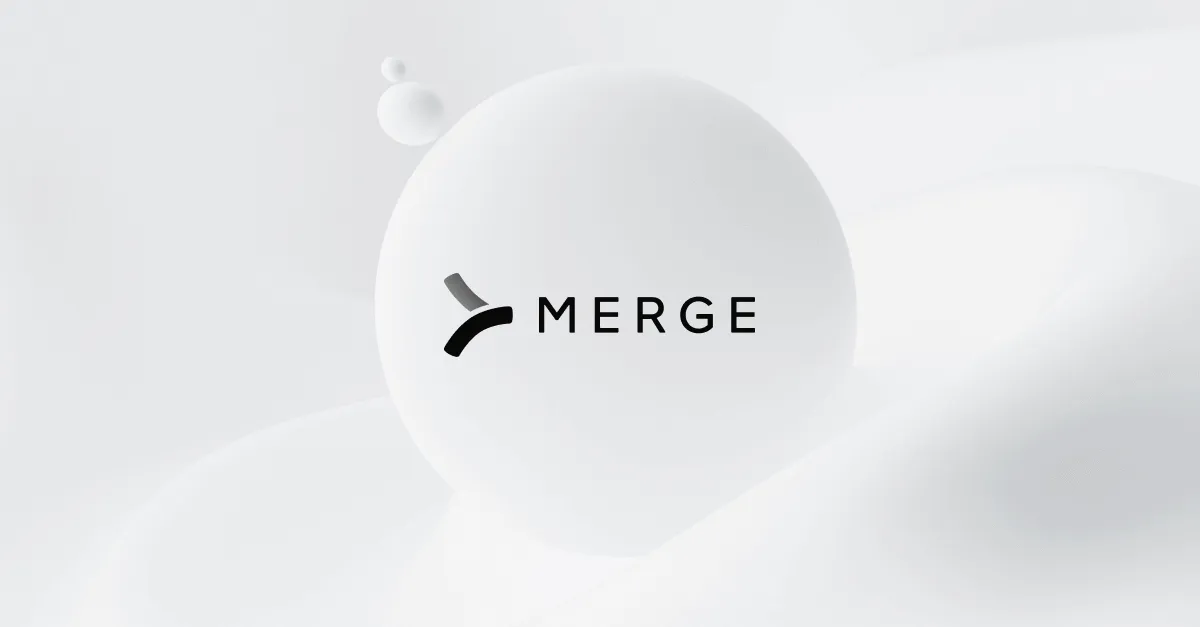Table of contents
What is an integration partner? Here’s what you need to know

You’ll likely come across complementary solutions that target the same set of organizations.
When you find yourself in this scenario, it might make sense to form an integration partnership with the vendor.
We’ll walk through what this entails, the benefits of forming these partnerships, the best practices for building them, and more.
Definition of an integration partner
It’s a 3rd-party SaaS solution that’s allowed you to build an integration with their product. Since the solution shares the same ideal customer profile (ICP) as you, you’re likely to expand the partnership to co-marketing and co-selling activities.
.webp)
Note: To avoid any potential confusion, it’s worth aligning on the differences between an integrator and a partner: An integrator can refer to integration middleware, or a 3rd-party tool that lets you build and manage integration flows between systems; while a partner can refer to an external organization that’s connected at least one of their applications to one of your business’ tools.
Related: What outsourcing integrations means?
Examples of integration partnerships
To help illustrate how integration partnerships can work, let’s highlight a few examples.
Automate gift-giving workflows in your product
Say you offer a gift-giving platform like Snappy or Sendoso. You can form a partnership with an HRIS solution (e.g., Deel) so that you can build to the solution’s API endpoints for employees.

Once that connection is established and made available to customers, they can use it to streamline the following processes:
- Any time an employee is added in the customer’s HRIS, they’re automatically added to your product, which initiates the specific onboarding flow the customer has set up
- On an employee’s birthday, your product kicks off the customer’s gifting flow for birthdays instantly
- When an employee reaches a certain work anniversary, your product initiates the anniversary flow the customer has defined
Manage candidate documents with ease
Imagine that you offer an ATS solution like Greenhouse or Lever. You decide to form a partnership with an e-signature platform (e.g., DocuSign) so that you can integrate to their platform, amplify the integration on their website, and partner with their team on marketing and selling the integration.
Through the integration, your users can automatically send new hire offer letters, NDAs, and other documents within your platform.
Moreover, your users can get real-time status updates on any documents and review fully-executed agreements without leaving your platform.
Store customers’ and prospects’ documents in a secure and easily-accessible place
Say you offer a CRM and want to help users add a wide range of documents to a file storage application (e.g., Dropbox) with ease.
To help facilitate this, you decide to form a partnership with a file storage application so that you can build an integration that powers the following flows:
- Any time a customer adds a file to your CRM, it’s added to the appropriate folder in their file storage application (a new folder would get created first if it doesn’t already exist)
- If a customer updates a file in your CRM, the corresponding changes take place in their file storage application
- Once a customer removes a file from your CRM, it can be removed from their file storage application
Benefits of forming integration partnerships
Here are just a few of the top benefits:
Helps you reach a large and relevant audience
Once you’ve formed an integration partnership, the vendor may be willing to promote your joint integration on their social channels, in emails, on sales calls, in press releases, among other places. In many cases, these vendors have large audiences across these channels (e.g. 500k followers on Linkedin), so their promotional activities offer you the chance to not only increase awareness of your integration but also your product.
For instance, Causal, a financial planning startup, was able to get Xero (a widely-used accounting software) to amplify their integration on X (formerly Twitter)—giving their business a significant boost in top-of-funnel awareness.

Enables your team to close deals at a higher rate
As prospects evaluate your solution against your rivals, they’re likely heavily considering—among other things—the integrations you and your competitors offer. In other words, if you can, through your integration partnerships, offer more in-demand integrations, you’re likely to close more deals.
We’ve seen this idea play out in the real-world.
When surveying hundreds of product managers and engineers as part of our 2024 State of Product Integrations report, “improved closed rates for new business” was the top benefit organizations cited:

This leads us to the other top benefits of forming integration partnerships.
Higher customer retention
Your product integrations likely allow clients to automate a variety of workflows within your platform, and enable them to no longer have to manually add or edit specific types of information in your product over time.
Taken together, your clients should see significantly more value from your product, motivating them to not only stay on longer but also increase their level of spending with you.
Helps you expand to new markets
Through your integration partner, you can start to get prospects from different regions, industries, and sizes aware of your solution and added to your pipeline.
This initial help might be all you need. Once you win a few deals in a given market and establish your value, the success is likely to cascade, leading you to close more deals and become a proven vendor in the space.
In addition, assuming the integrations you offer are relevant to your target market, they should be influential in helping you get traction.
Provides you with an opportunity to get advice and insights
Your partnership also serves as an opportunity to trade insights on what’s working for your business—from your pricing model to your support operations to your marketing efforts—and what isn’t. This can, hopefully, help you avoid costly long-term mistakes, while helping you make decisions that prove pivotal.
Best practices for building an integration partnership
Once your team is fully committed to seeking out and establishing integration partners, you’ll need to keep the following best practices top of mind.
Prioritize your partnership opportunities
Since it’ll take your team time to form the partnership, build the integration, and engage in other activities together, you’ll want to make sure that the investment is well worth your team’s time.
To help you prioritize your opportunities, you can score them across a variety of areas and then compare their total ratings.
Here are just a few areas to consider grading them on (it’s worth noting that some of them offer more flexibility in how they can be scored):
- The degree of customer and prospect overlap
- Reputation in the market (e.g. overall rating on software review sites like G2)
- Online presence (e.g. followers on social channels)
- Compatibility with your preferred type of API (e.g. REST)
- Quality of their API documentation
Enable and motivate your partners to engage in co-marketing and co-selling activities
Many of your integration partners likely have talented go-to-market teams that can help sell and market your product. But that doesn’t mean they will (after all, they have their own product to worry about!).
Motivating your partners and ensuring their success requires delivering all of the following (and more): a generous revenue sharing plan; marketing materials, like a one-pager, that explain the value propositions of your joint integration and your product; a demo environment of your product for their reps to use on calls with prospects; and a direct line of access to your support team so that their reps can get any questions or concerns about your product answered quickly and easily.
Related: Best practices for logging API integrations
Use 3rd-party tooling for building the integration
You’re more than likely going to build the integration through the partner’s API, and while they might provide useful documentation and a sandbox account to help you develop and test the integration, the process will still likely be extremely time and resource intensive for your developers.
With that in mind, you can use a 3rd-party integration tool to simplify and expedite your integration build. For example, using a universal API solution (also referred to as a unified API solution), you can not only build to one partner’s API but to hundreds of other 3rd-party APIs—all through a single integration build.

Build integrations to your product at scale through Merge
You likely only have time to form and manage a handful of integration partnerships successfully, but you need to provide many integrations to meet your clients’ needs and address your prospects’ demands.
Merge, which offers a single API to add hundreds of integrations to your product, lets you address the latter effectively.
Learn how Merge can help you scale your integrations across key software categories—from HRIS to CRM to file storage—and provide reliable and performant integrations by scheduling a demo with one of our integration experts.
Integration partner FAQ
In case you have any more questions on integration partners, we’ve addressed several frequently-asked questions below.
When is the right time to work with a specific integration partner?
The best time is generally when the demand for using the integration among your customers and/or prospects is high.
That said, the right time can also be when a competitor forms a certain integration partnership and you need to do the same to remain competitive; or a potential integration partner’s platform is growing quickly and you anticipate integration demand to increase sharply; or the prospective partner has a large and talented go-to-market team that can help raise awareness of your platform and drum up demand for the integration.
What’s required to enter into an integration partnership?
The requirements vary from vendor to vendor.
In many cases, you’ll need to make a certain financial commitment, such as $20,000 per year.
During the partnership application process, you may also need to prove that you’re not a competitor, meet certain business requirements (e.g., minimum headcount), and showcase your platform’s growth and recent accomplishments.
How do you source integration partnership opportunities?
Among other things, you can survey your go-to-market teams to uncover the most requested integrations; analyze your competitors’ product integrations to help brainstorm strong partnership candidates; and run market research on your target market(s) to understand the specific integrations they’d like to connect to your platform.
Which teams run integration partnerships?
Generally speaking, partnership or business development teams run them.
That said, larger companies often have partner marketing teams that help facilitate co-marketing activities; and mature sales and customer success functions often have processes in place to co-sale and support joint customers.
What is a partner integration strategy?
It's the collective set of processes an organization takes to identify, move forward with, and sustain integration partnerships. The goal from executing the strategy is to provide an increasingly valuable platform that keeps customers happy and attracts new business.









.jpg)
